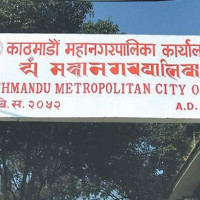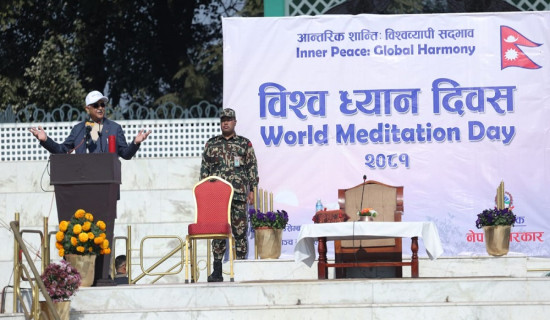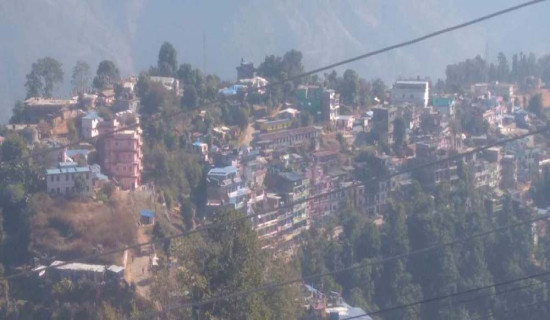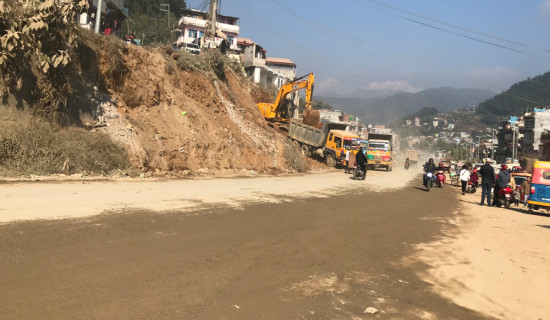- Saturday, 21 December 2024
Sarangi strum fading from villages
By Our Correspondent,Ghorahi, Oct. 11: There was a time when most of the Gandarbhas, a tribal community, used to play the Sarangi in the villages of Dang district.
The Gandarbhas travelled from village to village, singing songs and supporting their families by playing musical instruments.
But now, that trend is fading away. The number of Gandarbhas who play the Sarangi and sing songs in the villages is declining.
The younger generation doesn’t seem to show much interest in the Sarangi.
Though a few young people do take an interest and play it, many of them move to Kathmandu and make a living by playing the Sarangi in Dohori (folk song) evenings.
Due to the lack of people who play Sarangi in the villages, it has become difficult to sell it, said Diver Gandarbha, a resident of Ward-11, Naya Basti, Ghorahi Sub-Metropolitan City.
Diver Gandarbha, who has been making Sarangis for over three decades, said that his profession is in crisis.
As the number of people playing the Sarangi has dwindled, the sales have also stopped, he added. According to Diver Gandarbha, as Gandarbhas stopped singing and playing the Sarangi with changing times, the profession itself has come under crisis.
He added that if everyone continued singing and making Sarangis like before, it would have been better, but now there are only a limited number of people in the villages who know how to play the Sarangi.
Previously, he used to sell seven or eight Sarangis a month, but now he only sells two or three.
The art of making Sarangis alone is not at risk, the lack of essential materials has also become a major problem.
Although good wood is needed to make a Sarangi, it has become increasingly difficult to obtain it lately, he added.
“If the new generation does not show interest in making and preserving our traditional instrument, then not only will we lose the wood needed for making the Sarangi, but we also face the risk of losing our identity itself,” said Gandarbha, the only one making the Sarangis in the district.
He said that due to community forests, people cannot go into the jungle to collect wood, and they have been obtaining the necessary wood from known timber depots to make the Sarangi.
According to him, small-sized Sarangis are sold for four to five thousand rupees, while larger and more attractively designed Sarangis are sold for nine to ten thousand.
Recently, some members of the Gandarbha community, along with schools and music training centres, have started buying Sarangis, showing appreciation for traditional Nepali instruments.
Purba Bahadur Gandarbha, a resident of the same area, warns that if attention is not given to preserving the instrument linked to the identity of the Gandarbha community, there is a risk of losing both the profession and the culture.
















